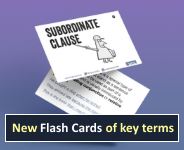Genre of Newspaper Articles
Activities
Warmer
Discuss with a partner:
- What was the last newspaper article you read? What was it about?
- Why do people read newspapers and news websites?
- What features do we expect to see in a newspaper article? Why are they used?
Activity 1
Read Article A. Discuss the following questions:
»
- Printer-friendly version
- Log in to view or leave comments


